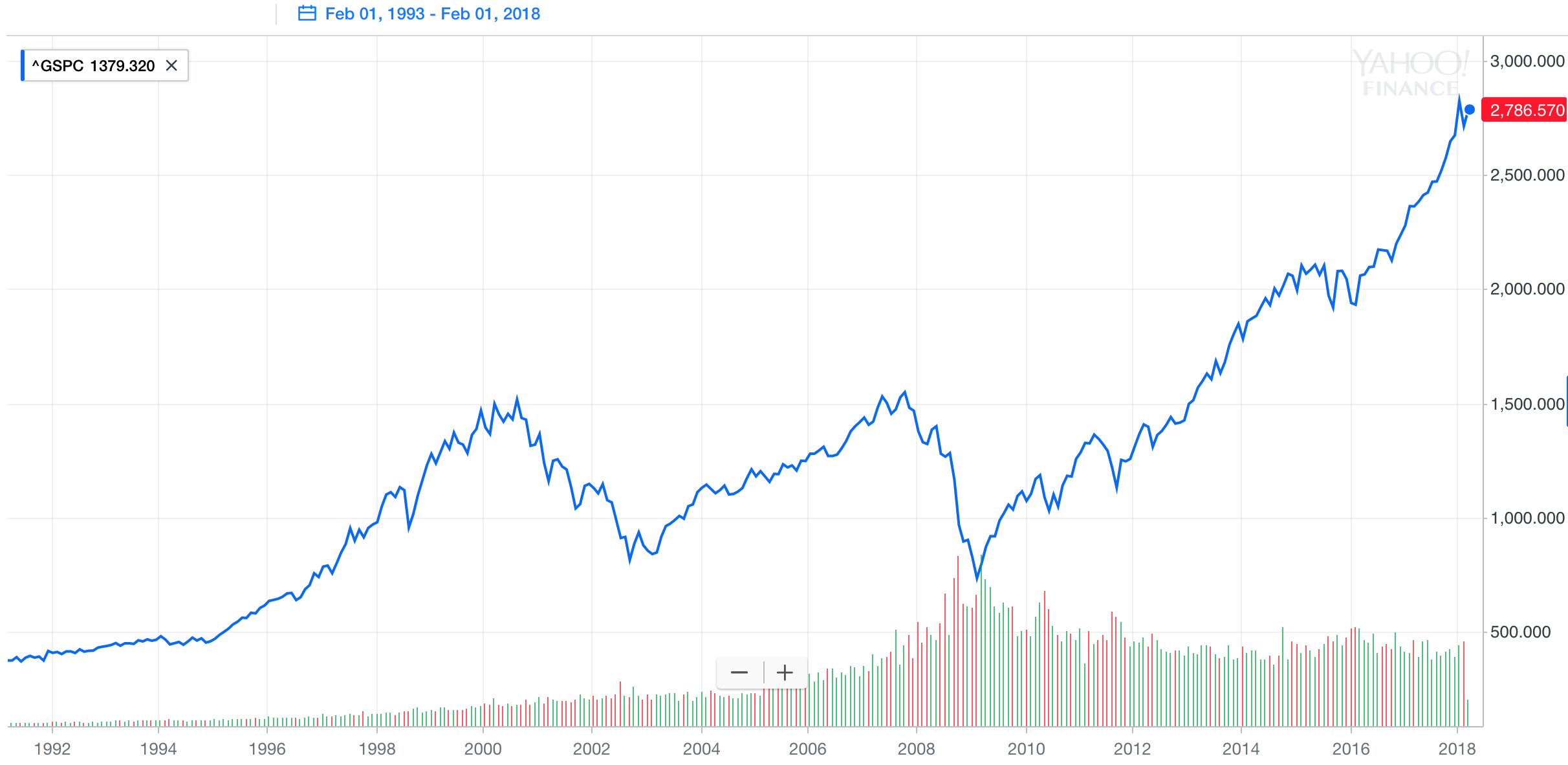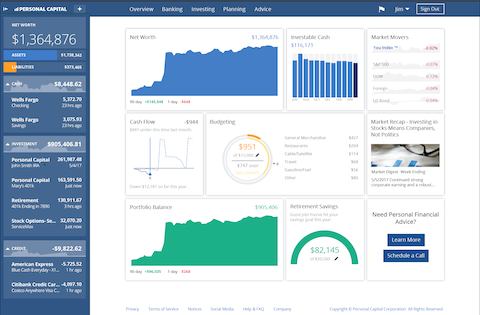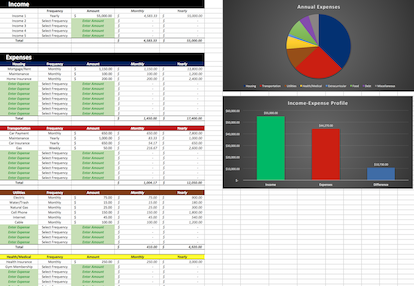
In Part 1, we discussed the role inflation plays in the deterioration of wealth over time. As we demonstrated, when money is not growing at a faster rate than that of inflation, its purchasing power will be continually diminished. Because bank accounts yield growth rates much lower than inflation, leaving any funds in a bank account will literally cost a saver money over time. The longer money sits in a bank account, the more value it will lose. This can greatly impact the ability of an individual to retire comfortably (and early). Inflation is only part of the story, however. There is another reason that saving money in the bank will leave you broke. It has to do with the opportunity cost associated with saving in a bank account.
Opportunity Cost
In broad terms, opportunity cost refers to the cost or trade-off of choosing one thing over another. For example, in order to gain the information contained in this article, you must spend some amount of time reading through it. Therefore, the opportunity cost of reading this article is that you lose the opportunity to use that time for some other activity that you could have done otherwise (e.g. watching television, sleeping, studying, reading a different article, etc.). In finance, the term opportunity cost is typically used to describe the trade-off between choosing one investment option over another. In this article, we will examine the opportunity cost of saving money in a bank account instead of investing it in stocks. We will crunch the numbers and investigate exactly how much you are costing your future self.
3 Different Savers
Let's follow three savers; Al, Brenda, and Carla. Each of them has recently decided to begin saving for retirement. They can't afford much, but after making some changes to their individual budgets, they each manage to start putting aside $50 per month. Al decides to deposit his money into a standard savings account each month. Brenda, having recently learned about high-yield savings accounts from a friend, opens her own account and deposits her money there. Carla, an avid GoGreenDollar reader, chooses to invest her money in a total stock market index fund. Each of the savers set up automatic deposits for their chosen savings method and let the cash accumulate on autopilot.
3 Different Results
Al, Brenda, and Carla each continue their chosen savings method for 25 years. How have things turn out? Simply by setting up $50 automatic monthly deposits, each of them was able to accumulate $15,000 in savings (i.e.$50 x 12 months x 25 years). Not a bad amount to have in your account, but there's more to the story. Since each saver selected a different investment option, the amount of growth on top of the money they saved, is vastly different.
Al chose to put his money in a standard savings account. These accounts offer a return of about 0.01%. At this rate, Al's account balance has grown to $15,019 after 25 years. With only $19 in gains, his money did not grow a great deal. $15,000 is still a nice chunk of change though, and much more than he would have had, had he never started saving.
Brenda deposited all of her money into a high-yield savings account with an interest rate of 1.25%. After 25 years of deposits and growth, her account balance is $17,599. By putting her money in a high-yield savings account, she's managed to gain an additional $2,599 on top of the money she saved. Not bad at all.
Carla, having invested her monthly deposits in the stock market, saw an average annual return of 7%. After 25 years, Carla's account balance has grown to a massive $40,631! Even though she invested exactly the same amount as Al and Brenda, she has gained tens of thousands of dollars more than either of them.
By putting their money in the bank instead of investing it in the stock market, Al and Brenda have paid opportunity costs of $25,612 ($40,631 - $15,019 = $25,612) and $23,032 ($40,631 - $17,599 = $23,032) respectively, compared to Carla.
Real World Example
So, now that we’ve run through a hypothetical example, let’s apply some real-world data. If you had deposited $500 in a savings account in 1993 and let it grow for the next 25 years, what would the balance of your account be today? Using 0.01% as the interest rate, by 2018 that $500 would have grown to approximately...$501. You’d have generated a return of only $1! But wait, maybe it was in a high-yield savings account with a 1.25% rate of return. In that case, 25 years of growth would have yielded $683. Much better, but still minuscule growth after 25 years. Looking at the actual data, the average yearly return of the stock market from February 1993 to February 2018 was 9.7%.
S&P 500 Historical Performance

If we apply this annual growth rate to the $500, the final balance is $5,596! This is with no additional money added. By not investing that $500, you missed out on about $5,000 of additional growth.
Final Thoughts
The point of this two-part series is not to discourage you from saving. I believe every dollar you are able to save is an invaluable investment towards your future, but a bank account is not the best place to keep that investment. If you desire to one day enjoy retirement, free from financial worry, you MUST invest. I cannot emphasize this enough. By choosing not to invest, you are choosing to pay a large opportunity cost, which will greatly diminish the growth of your money over time. In addition, the value of whatever you are able to save will be slowly eaten away by unyielding inflation. It’s perfectly fine to keep some money in the bank for emergency use. In fact, I recommend you keep 3-12 months worth of expenses in a high-yield savings account, for quick emergency access. But all funds exceeding this amount should be actively working for you via investments. So, get to it!
Tools To Get You Started
Get a head start on your journey toward achieving financial independence by analyzing and tracking your income, expenses, investment performance, and overall net worth with the free online wealth management tool Personal Capital.
We use Personal Capital regularly to analyze our investment fees, track our investments, and project our net worth. We also periodically review our progress toward retirement with their retirement planning calculator.
If you’d rather do things on your own, become a subscriber today and you’ll receive our Free Financial Planning Dashboard. This tool allows you to enter your income and expenses to create a detailed budget. You can use it to track your spending habits over time or just to get an idea of where your money is going each month. Take a look at the automatically generated charts and you may discover you have a little more cash to invest than you thought.
If you’re interested in detailed instructions on how to budget, save, pay off debt, and invest, check out The 6 Phases of Building Wealth. This book provides step-by-step instructions for working through each “Phase” in the process of achieving Financial Freedom. If you're just starting out, the information in this book will provide you with an invaluable resource. You can pick up the digital version for only $2.99 on Amazon.
Disclosure: Some of the links found on this website may be affiliate links. Affiliate links pay GGD a small commission when you click through and/or make a purchase. This is at zero additional cost to you.
Full Disclaimer/Disclosure
Related Posts
-
Surprisingly Simple Investment Strategy For Retiring Early
The other day, while browsing through YouTube videos, I came across one that featured Tony Robbins discussing investing. I watched the video and found it had some good, if not groundbreaking, suggestions. There was one…
-
The Basics: Setting Up An Investment Account
By now, it’s pretty obvious that I believe investing is vitally important to your future financial success. As you've also probably gleaned from my writings, the stock market is, by far, my favorite investment option.…
-
Why Saving Money In The Bank Will Leave You Broke (Part 1)
In 1923, Germany began printing and circulating two-trillion mark banknotes. That’s a “2”, followed by 12 zeros (i.e. 2,000,000,000,000) on each individual banknote! What would cause a country to print such a large denomination of…







Great read with good examples!
Thanks for reading!
OMG! I had no idea that so little money accumulates in traditional savings accounts!
Thank you!
Shocking right?? That’s why investing is so important.